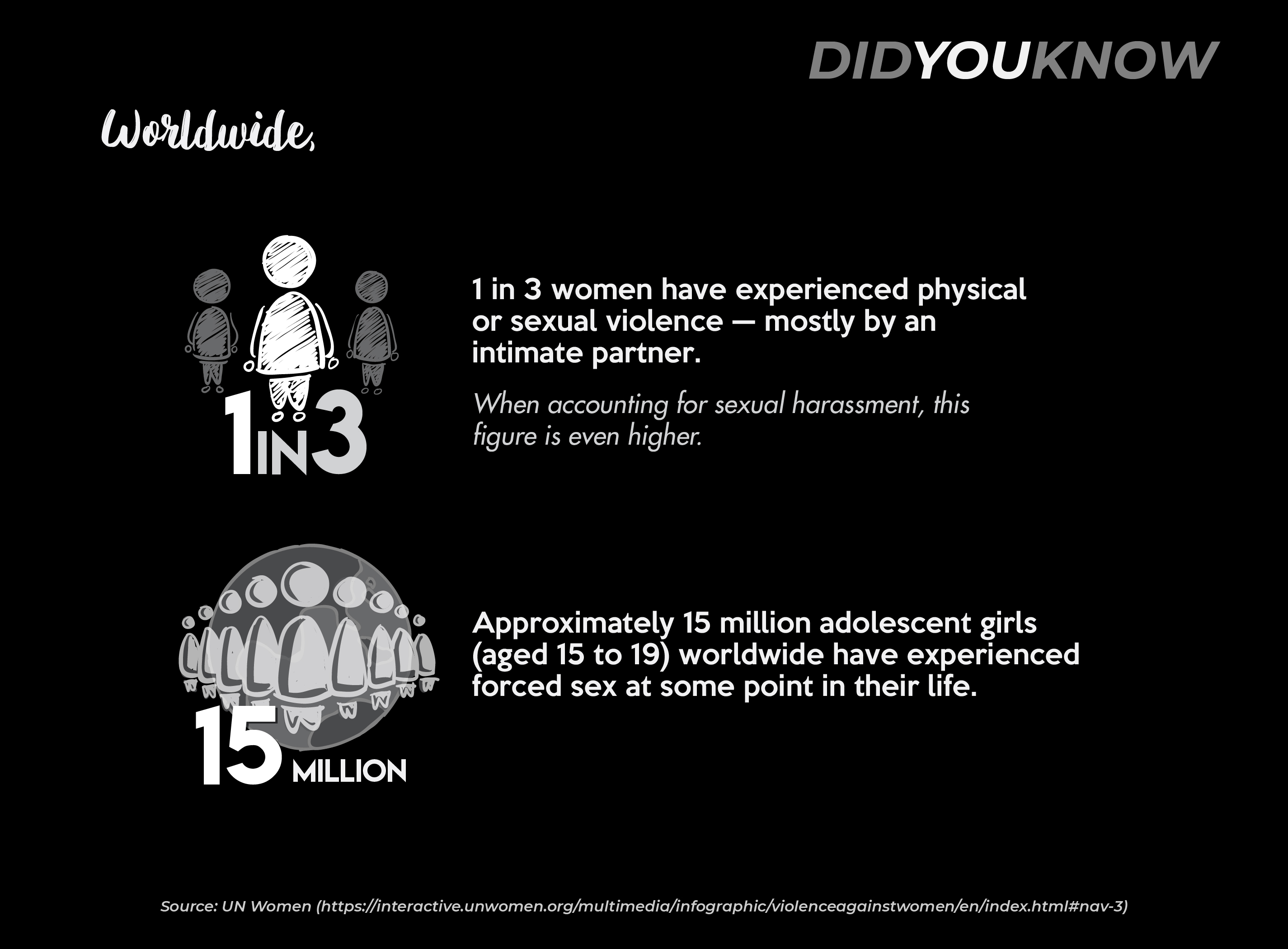Gender-Based Violence Observatory
The Gender-Based Violence Observatory aims to make GBV visible and to facilitate access to resources on GBV. It is a repository of data on GBV, not only of treaties, laws and jurisprudence, but also of women’s lived experiences. It aims to make data work for women, girls, and LGBTQIs human rights.
Access documents related to Gender-Based Violence
Gender-based violence remains pervasive in the Philippines despite passage of key legislations such as the Anti-Violence Against Women and their Children Law (RA 9262), the amended Anti-Rape Law (RA 8353), the Magna Carta of Women (RA 9710), and the more recent Safe Public Spaces Law (RA 11313). The 2017 National Demographic and Health Survey shows that 1 out of 4 married women aged 15-49 have experience any form of physical, sexual, or emotional violence by their current or most recent partners. It also shows that only one third of women who experience physical or sexual violence sought help, and the common source of help was not with the authorities but with the woman’s own family (65%) and friends (18%).
Recognizing the continuing prevalence of gender-based violence and the continuing challenges in women’s and girls access to justice, the Commission on Human Rights established the Gender- Based Violence Observatory (GBVO) as among one of the four human rights observatory.
The GBVO is envisioned as a resource hub for GBV, a repository of GBV data including domestic and international standards, and GBV researches, reports, situationers documenting how laws are implemented and how GBV manifests in the lived experiences of women, girls, and members of the lesbian, gay, bisexual, transgender, queer, and intersex (LGBTQI) community.
The GBV observatory is dynamic and reflects current challenges, contexts, and realities. It aims to hold not only reports from the Commission but also efforts from the other government agencies, the academe, CSOs and other partners. It contributes to the fulfillment of the Commission’s mandate as Gender Ombud to monitor state’s obligations in addressing GBV and in forwarding key policy recommendations.
The GBVO aims for a deeper understanding of GBV, enhancing access to justice, and in general, making data work for women, girls, and members of the LGBTQI community.
Reports and Documentation
2016 CHR Gender Ombud Guidelines: Promoting Gender Equality and Women's Empowerment Under the MCW (RA 9710) and Related Laws
Guidelines
2016 Gender Ombud Report
National Inquiry Reports
2016 Let Our Voices be Heard: Report of the Commission on Human Rights Philippines’ National Inquiry on Reproductive Health and Rights
National Inquiry Reports
GBV Snapshots


For reports of GBV, visit CHR’s Online Reporting Portal:
e-Report sa Gender Ombud
Reports from the GBV
Online Reporting Portal
Types of cases,
including but not limited to:
Regional GBV Mapping and Strengthening of Legal Referral Mechanisms
A component of the Gender-Based Violence Observatory is the process we call the mapping of legal referral mechanisms on GBV. The mapping occurs at City or Municipality level and is conducted through focus group discussions with duty bearers (government agencies addressing GBV) and community women/organizations. The FGDs focus on identifying the existing mechanisms, policies, and protocols on GBV and identifying identifying issues and gaps in documentation and women’s access to justice.
The mapping serves as a take off point for CHR regional office’s to understand continuing challenges in GBV response and as take off point for protection, promotion, and policy work. The documents in this section pertain to the preparation undertaken prior to the GBV mapping (framework, pilot areas, capacity building) but also the results of the mapping the different regions of the Commission. Researchers and policy makers would be interested in this qualitative, grounded data and recommendations.


